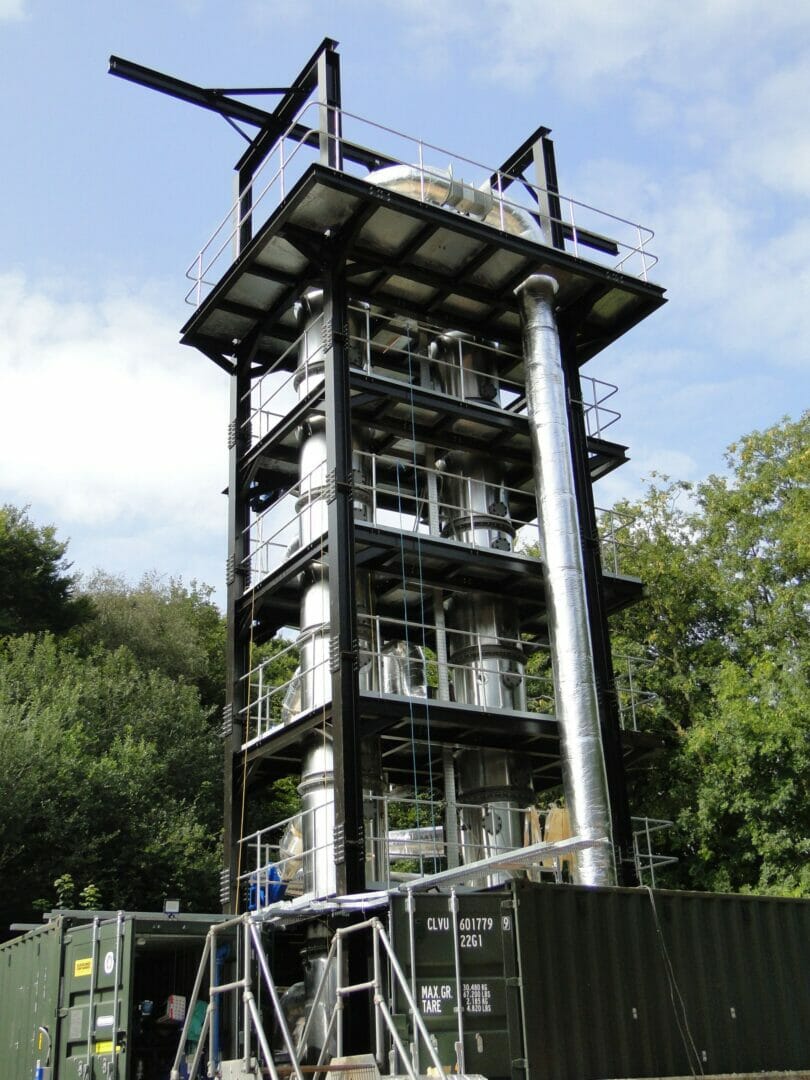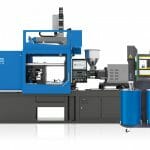A ground-breaking onsite landfill wastewater (leachate) thermal treatment and separation process called LAT™ (Low temperature Ambient pressure Technology) has demonstrated a 48% reduction in operating costs and a 70% reduction in energy usage at Viridor’s Broadpath landfill site in Devon. Now commercially available, LAT™ is set to change the way local councils and landfill operators manage leachate forever.
LAT™ uses low-grade onsite waste heat or renewable energy sources which considerably reduce energy usage by up to 70% while cutting carbon emissions. Local communities also benefit from better air quality due to the reduction of road tankers currently used by many operators to truck raw landfill wastewater to remote offsite treatment facilities. Over one year, using LAT™, Viridor’s Broadpath landfill site is set to save the equivalent emissions of nearly one million car-miles.
Existing global leachate treatment technologies consist of outdated, energy-hungry processes which contribute significantly to climate change. LAT™ challenges these techniques head on by removing the need for traditional leachate treatment processes: Reverse Osmosis – membrane type solutions that cannot effectively operate beyond moderate water recovery levels (little beyond 50%), and Thermal Boiling Solutions that use boiling water techniques and pressure vessels to treat leachate.
To date, most research in the field has focused on incremental improvements in base technologies rather than seeking a step change solution in the treatment of leachate, both in landfill and across other water intensive processes. LAT™ takes a whole new approach to return up to 90% of water to be reused and/or recycled, onsite and at new levels of efficiency.
Mark Hardiman, CEO of LAT Water said: “We’ve been running the pilot at a 10 m3/day demonstration trial for six months at Viridor’s Broadpath landfill site in Devon and the results speak for themselves. We have also been operating a 120 m3/d LAT™ in China for the past eighteen months, so we know that LAT™ is scalable. We’re now making LAT™ available to all landfill operators and local councils across the UK on a lease basis, which reduces the CAPEX hurdle and shortens the ROI”.
The use of waste heat provides net carbon savings as well as putting to use heat sources which would otherwise be polluting the environment and contributing to global warming. Product concentrate can be treated within existing discharge consents, without the need for the costly addition of new permits. LAT™ is a vital technology in the decarbonisation goals of landfill operators and local councils while delivering a significant return on investment (ROI) through efficiency savings.
The pilot has been partly funded by the department of Business Energy & Industrial Strategy (BEIS), as part of their Industrial Energy Efficiency Accelerator (IEEA). The programme is managed by The Carbon Trust with supports from Jacobs and it provides funding for energy efficiency process technologies, alongside incubation and commercialisation support.
Tim Rotheray, Innovation Director of Viridor commented: “The future of the landfill industry depends on managing the legacy issues of the site. More than 50% of the costs for us related to the disposal of the leachate and by reducing these costs and recovering the resources from the leachate, we take an important step towards a circular economy. We are hugely excited to be working with LAT Water on this game-changing technology and look ahead to substantial cost and efficiency benefits in the years to come”.
Paul McKinney, BEIS IEEA Programme Manager at the Carbon Trust added: “LAT Water has demonstrated a step change energy efficient solution for treating contaminated water which could form a key technology within the UK’s drive to reduce energy use and consequently achieve reductions in carbon emissions.”
The LAT™ process makes use of waste heat which would otherwise be discharged into the environment, as the key energy source to drive the process. Combined with the reduction in diesel fuel used by reducing the number of tanker movements, and more energy efficient separation technology, the process is set to shake up the wastewater management sector as a whole.








